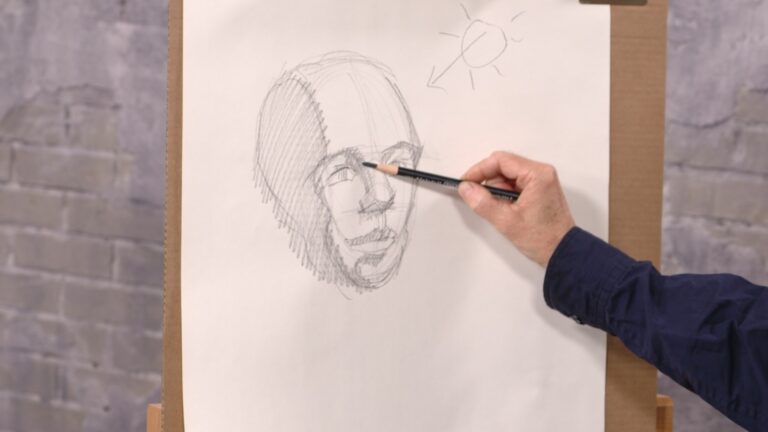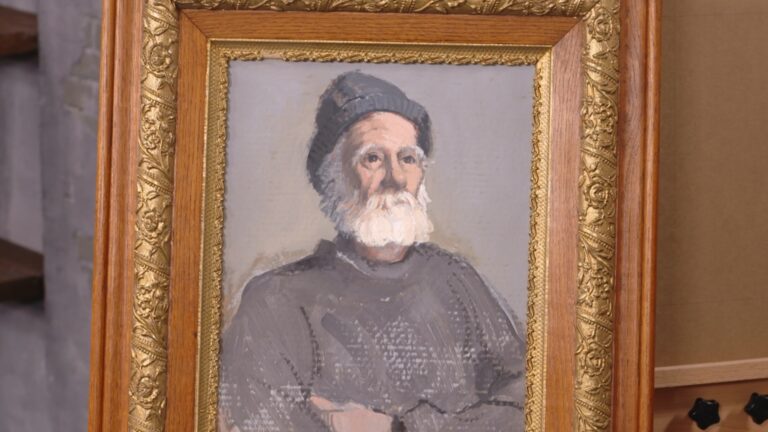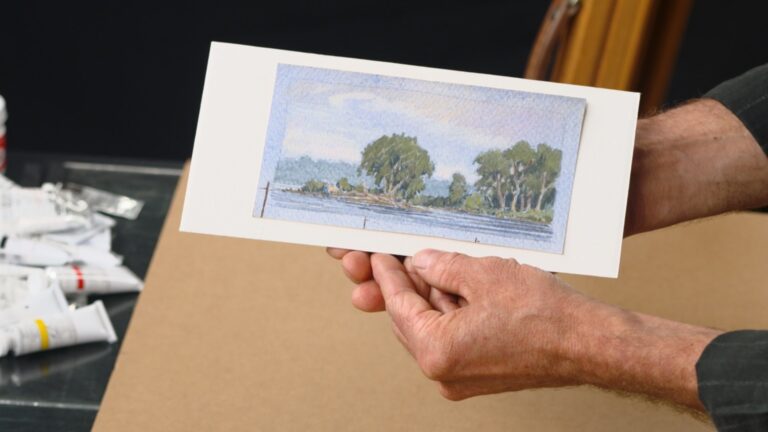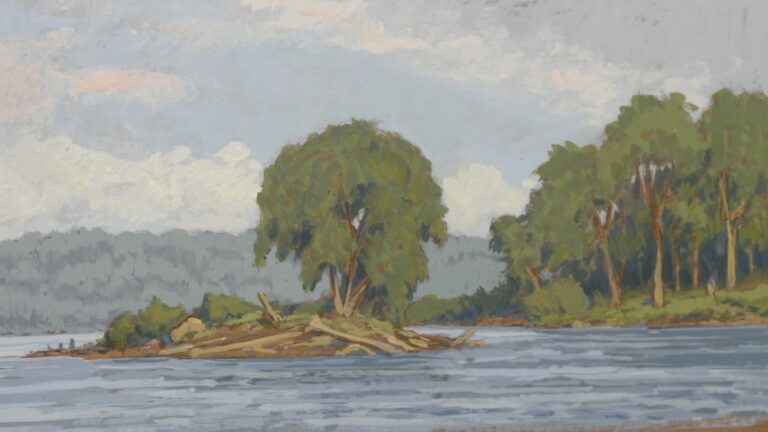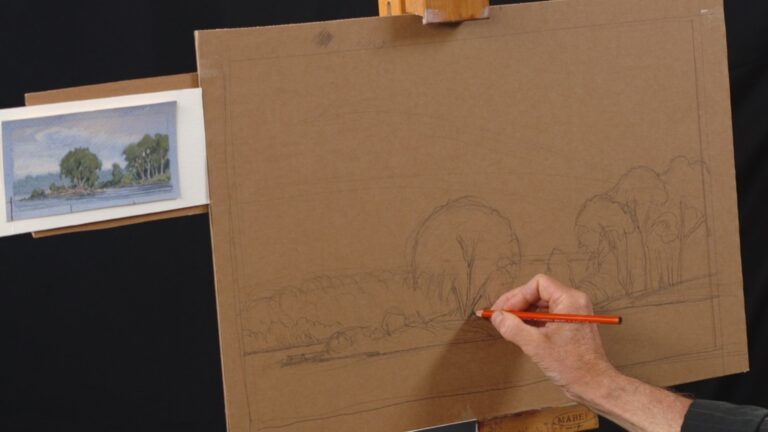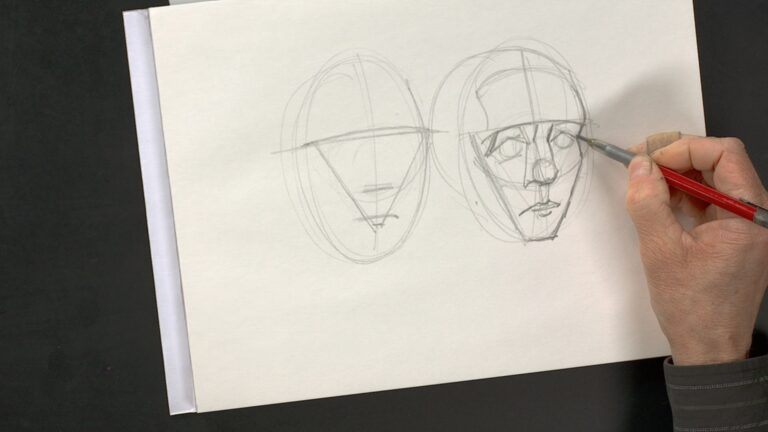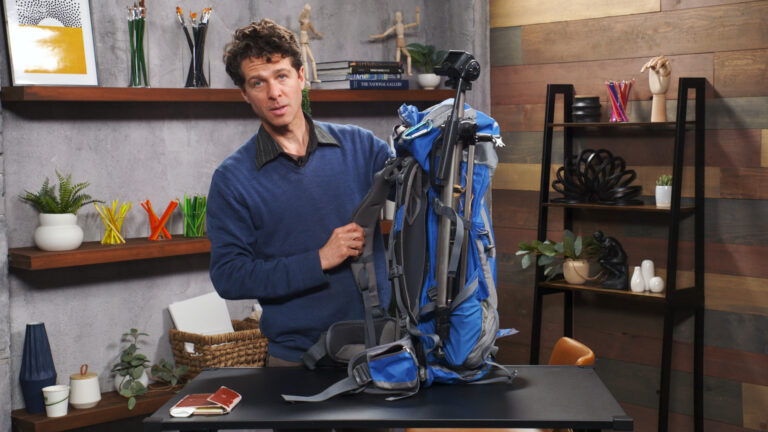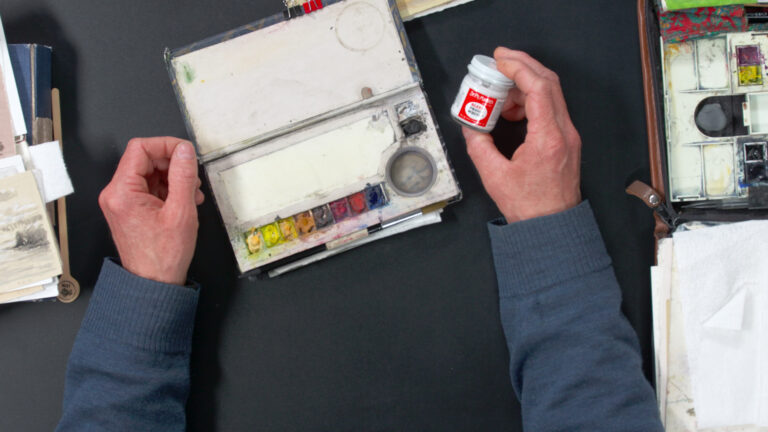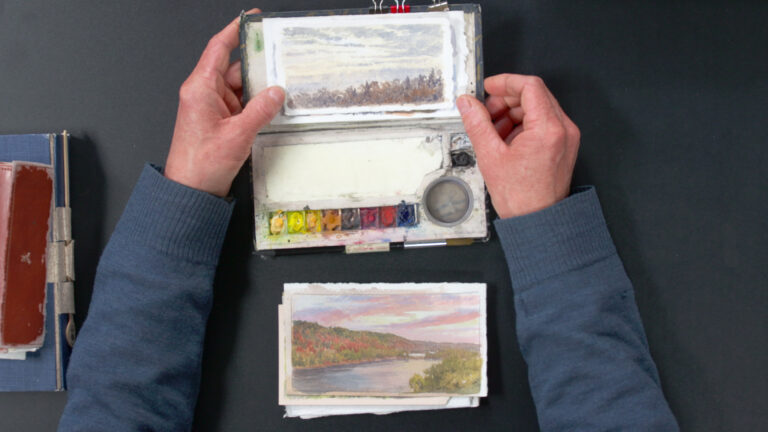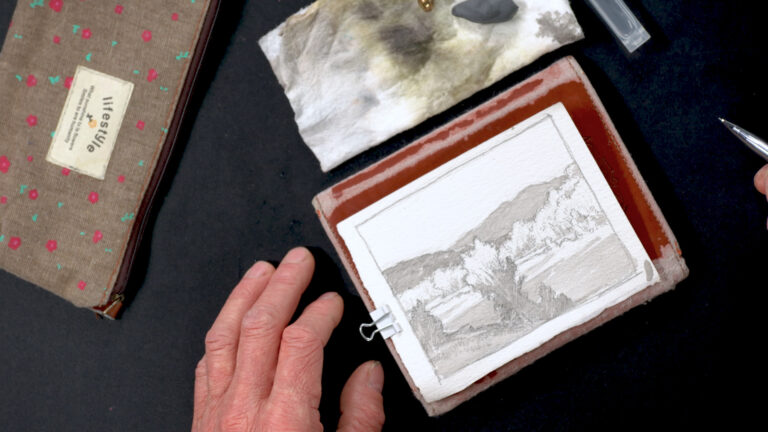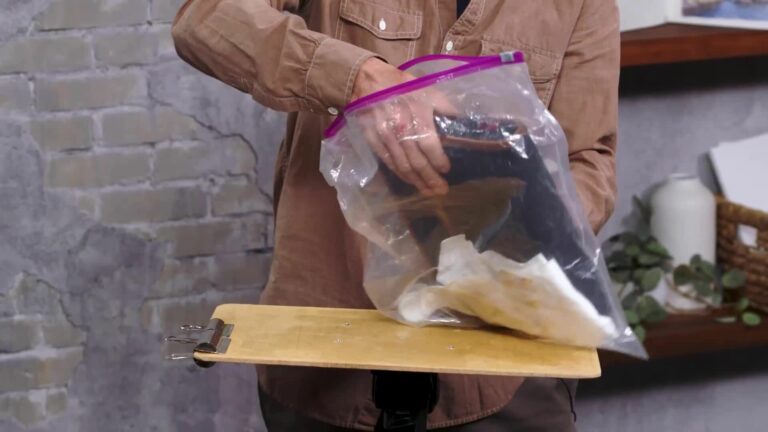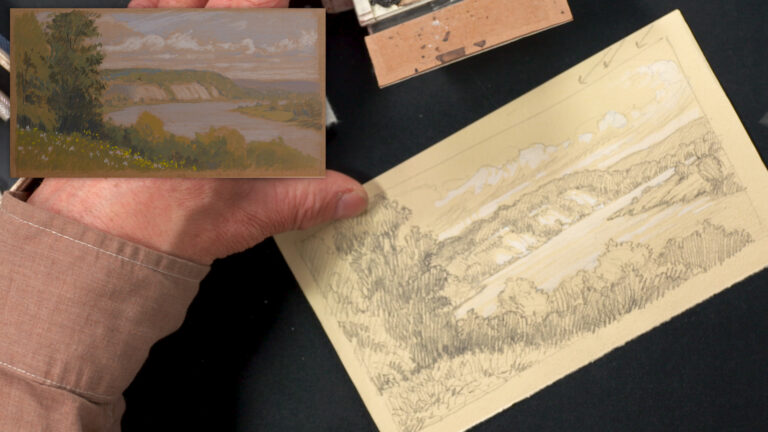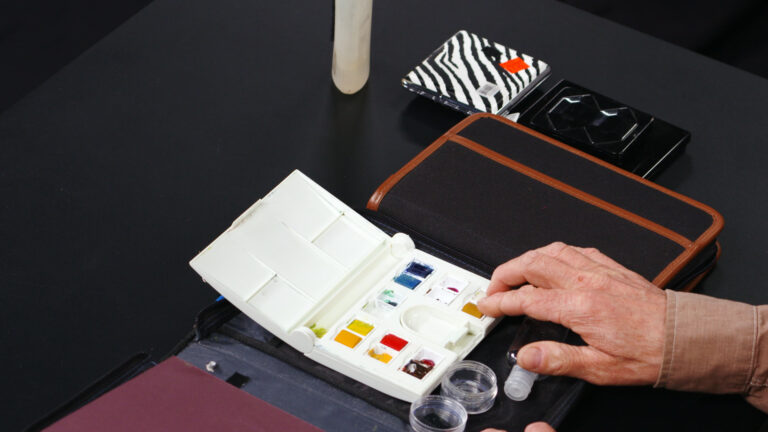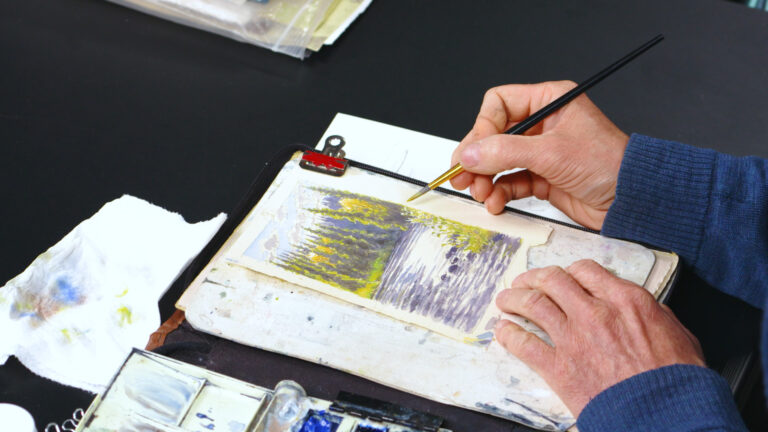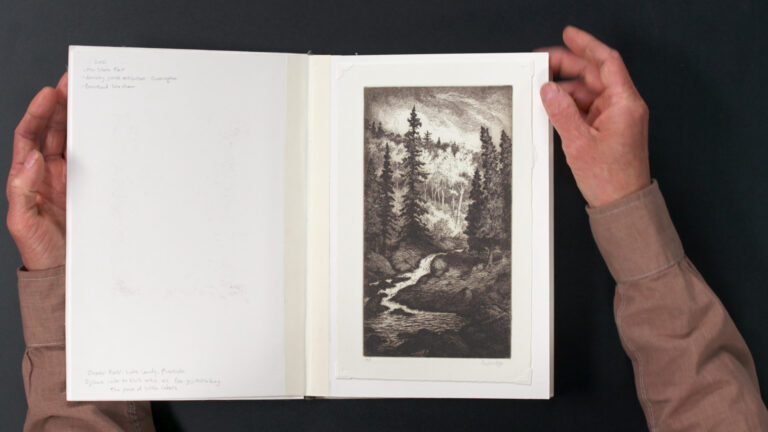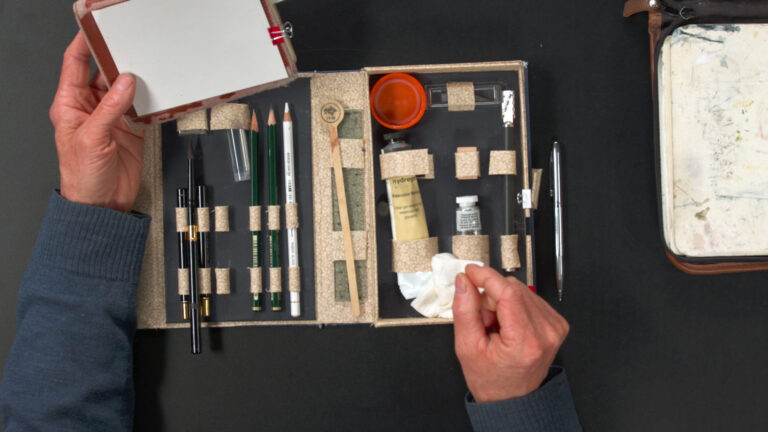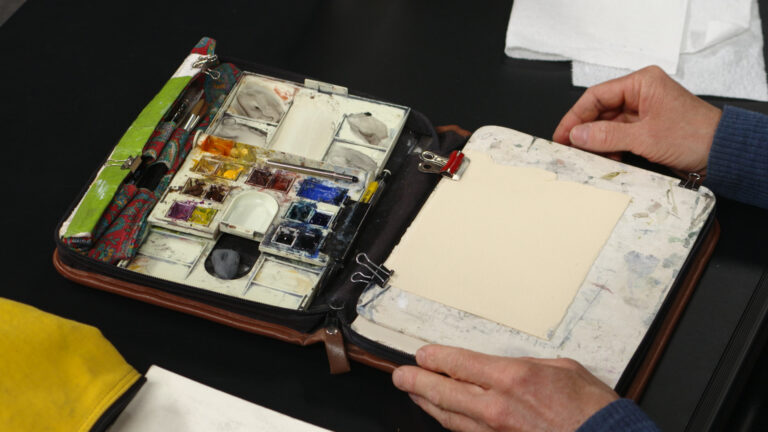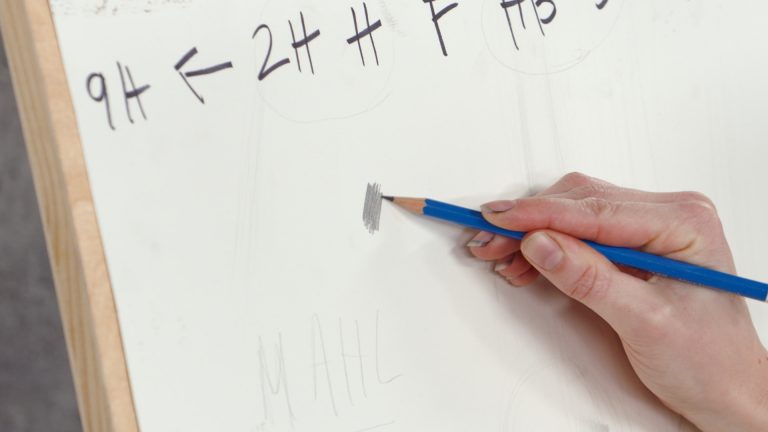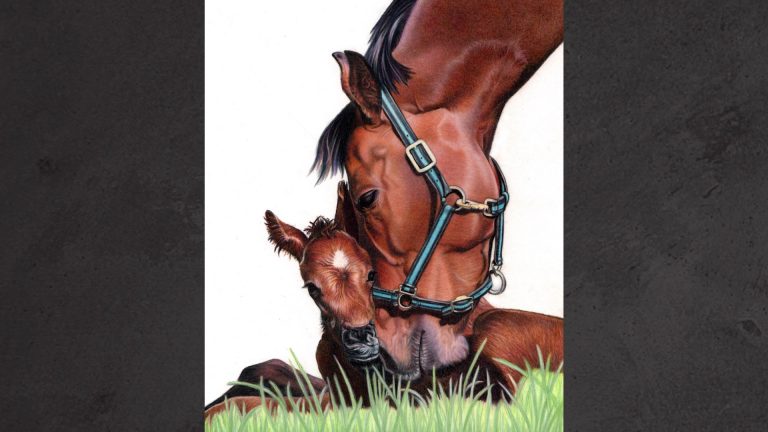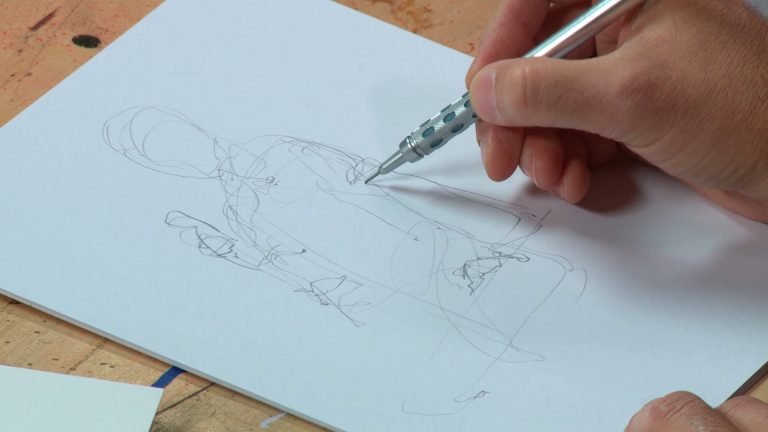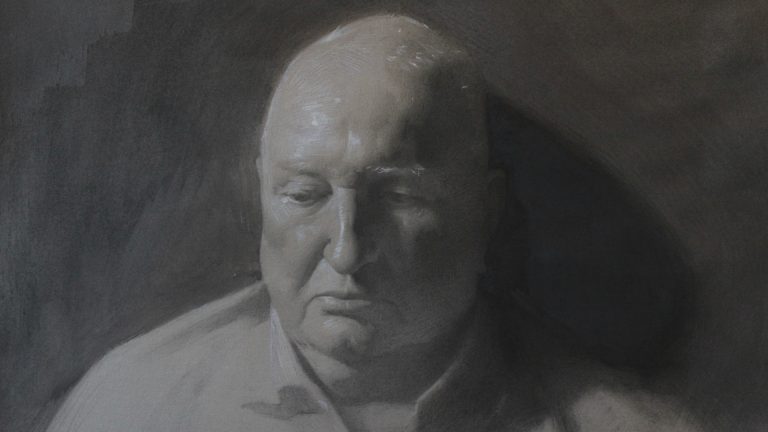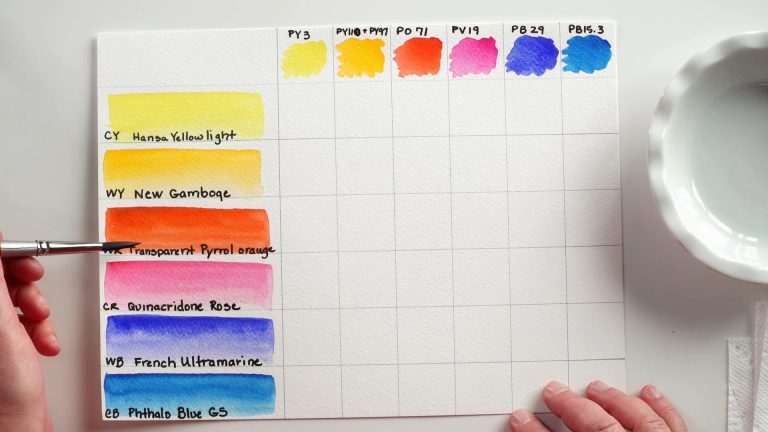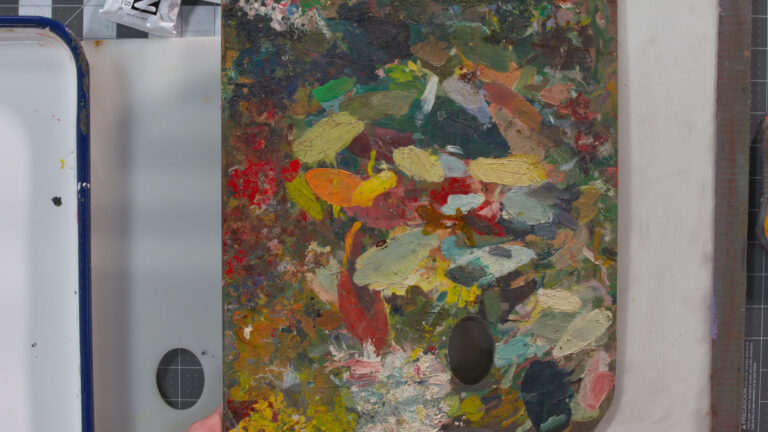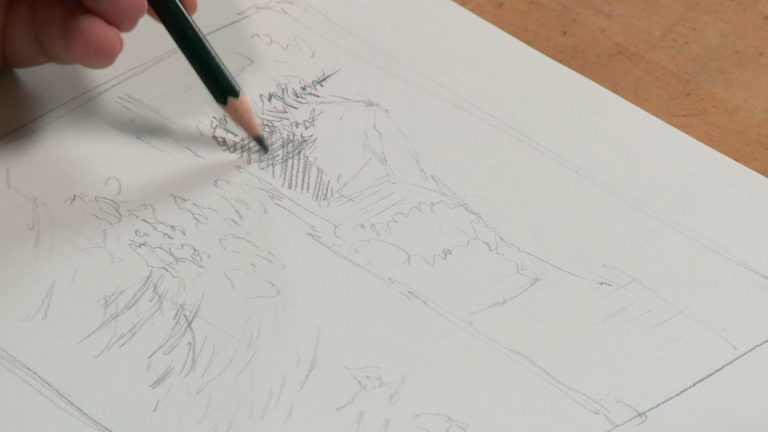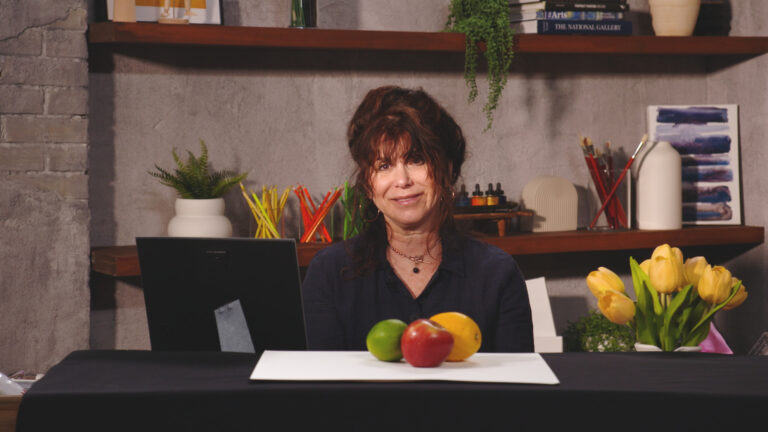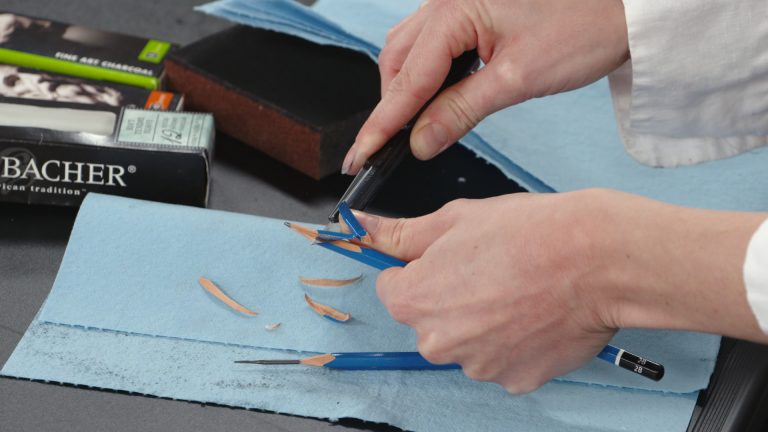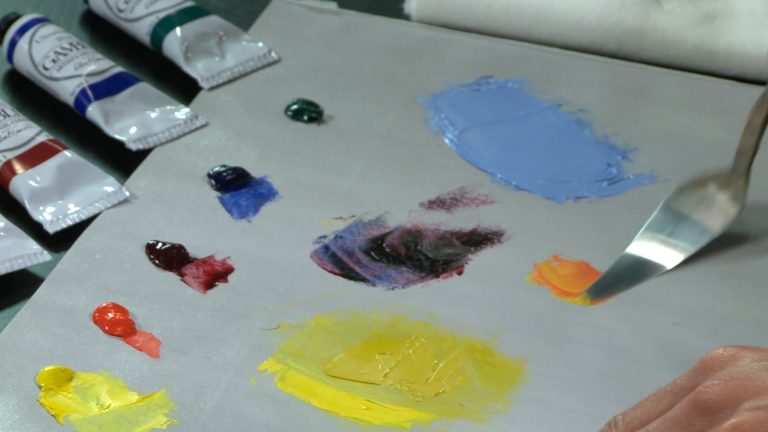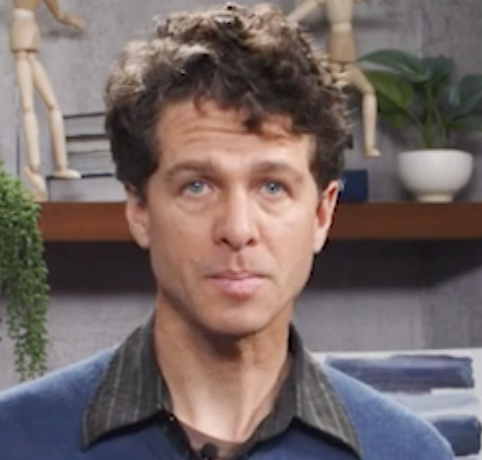
Choosing Sketching Paper
Stuart LoughridgeArtist Stuart Loughridge discusses paper for sketching and his preferred sketching paper with examples. Paper comes either white or toned—there are many different tones available—and either thick or thin. But the main thing to remember is that if it’s white, the brightness is the white of the paper, so you need to save the white as you sketch. But if it’s toned, then you might add the highlights later with an opaque white. If you have a limited amount of time and want to work in watercolor, it helps to work on toned paper so that you can get to lower values quicker than on white paper.
Stuart shows his pocketbook sketchbook that is meant for sketching in pencil or with a single pigment like brown or black. He shows examples of some of his sketches on different toned paper and discusses how he will sometimes accent with opaque white to bring out the highlights and use a pigment on top of his pencil sketch to bring down the values and create shadows. On white paper, he shows some examples of pencil outlines and minimal shading. He also has one that has black pigment along with his pencil drawing, keeping the white paper white to create highlights.
Moving onto his color sketch kit, he shows several sketches on white paper, using the paper as the highlights in the sky. Because these sketches are using several pigments, he explains that there will be a longer drying time before you can build up successive layers. You will need to think about how much time you have to sketch—if you only have 15 minutes to sketch, you may want to stick with the pencil drawing; if you have 30–45 minutes, you might want to color on toned paper; and if you have an hour, you might want to color on white paper because you have a longer time to wait for the color to dry.
Stuart shows examples of sketches on white and toned paper using his watercolors. All paper that you decide to paint on should have a little bit of sizing in it so that it doesn’t soak up all of the water. With sizing, you will have freedom to move the water on the paper. It is possible to size paper yourself if you have some without sizing.
Stuart advises to buy good paper from local paper makers or small manufacturers and experiment on them. He pulls out some of his handmade sketchbooks made of different papers—one of recycled currency paper, another of white watercolor paper, and another of cream paper. You can also get good sketchbooks at the art store.
Explore videos by Stuart Loughridge
You may be interested in
Premium Membership
Unlock exclusive member content from our industry experts.
- 24/7 Access to Premium Visual Art Videos, Projects, and Tips
- Step-by-Step Instructional Demos, Guides, and Tutorials
- Access to Ask the Expert Program
Unlock exclusive member content from our industry experts.
- 24/7 Access to Premium Visual Art Videos, Projects, and Tips
- Step-by-Step Instructional Demos, Guides, and Tutorials
- 2 Full-Length Classes to Keep in Your Account for Life
- Access to Ask the Expert Program
Gold Membership
$340 Value
Get everything included in Premium plus exclusive Gold Membership benefits.
- 24/7 Access to Premium Visual Art Videos, Projects, and Tips
- Step-by-Step Instructional Demos, Guides, and Tutorials
- 4 Full-Length Classes to Keep in Your Account for Life
- 8 Downloadable Visual Art Guides
- Discounts on Purchase-to-Own Content in the Artist's Academy Shop
- Access to Ask the Expert Program
- Access to GOLD LIVE Streaming Events


